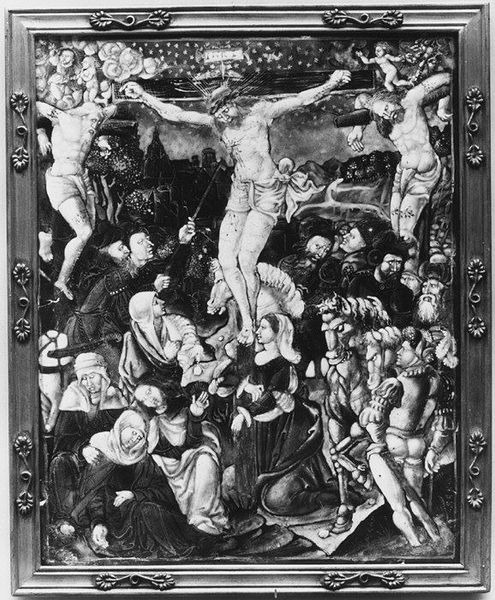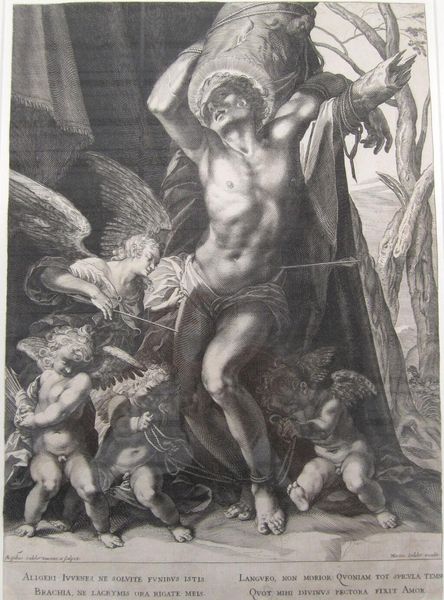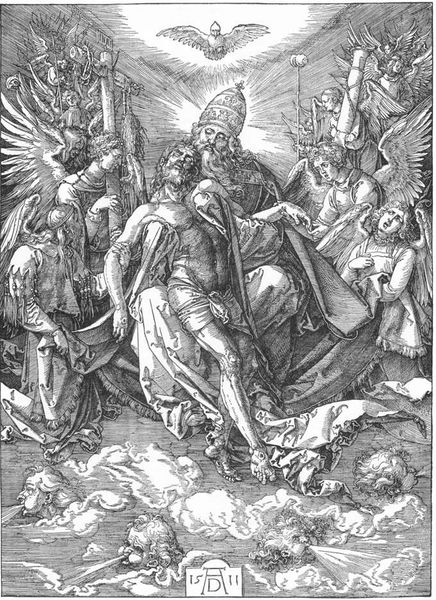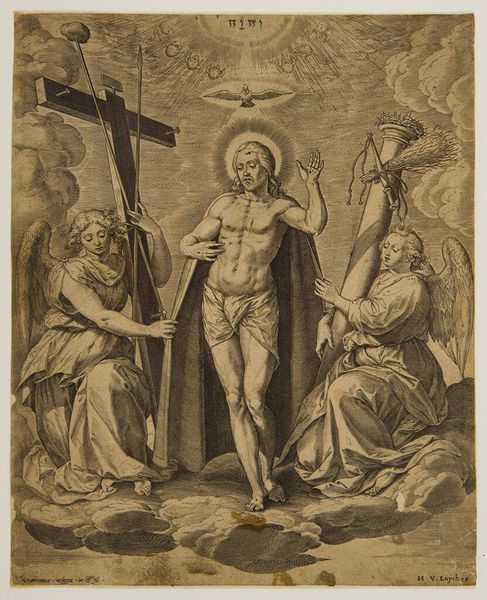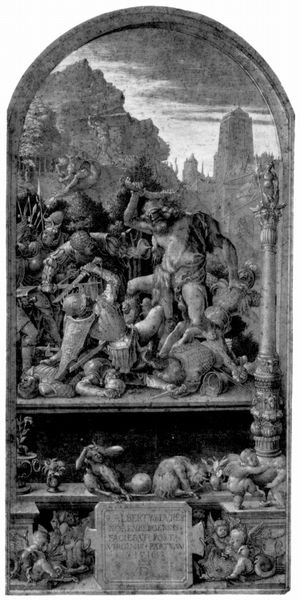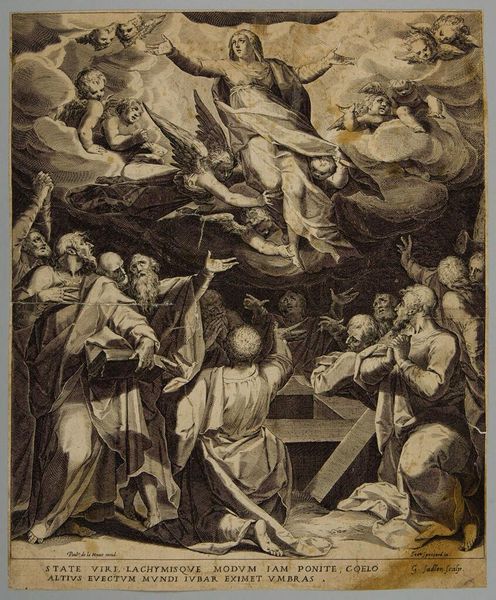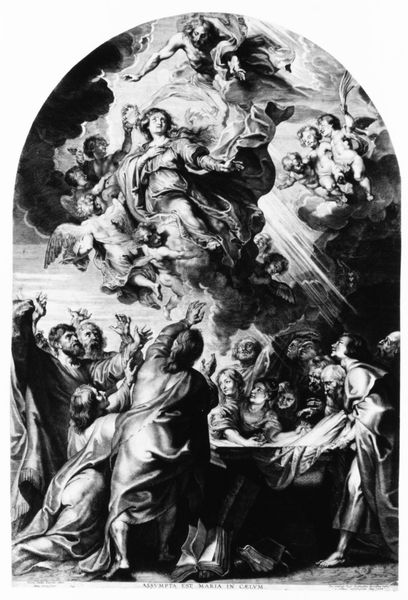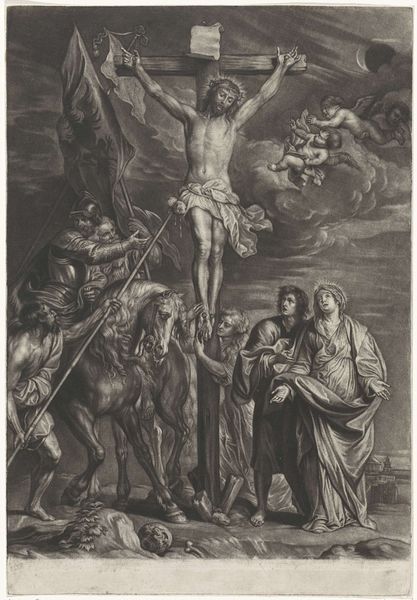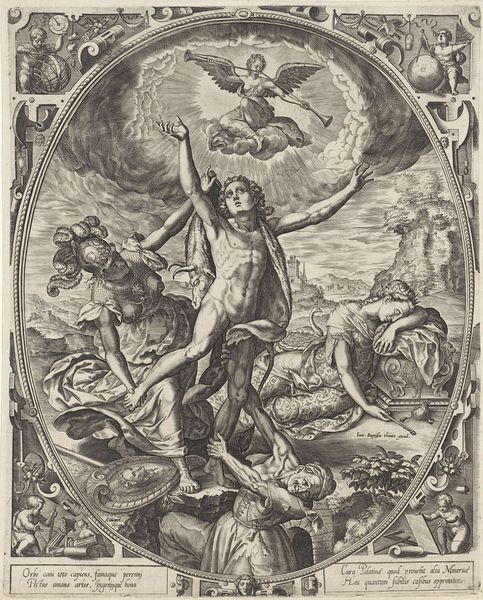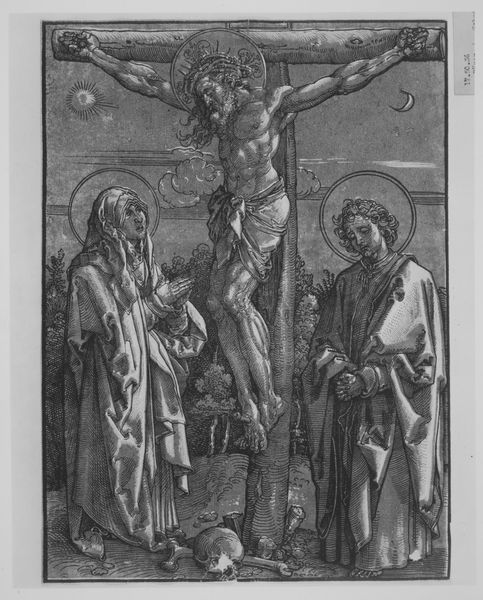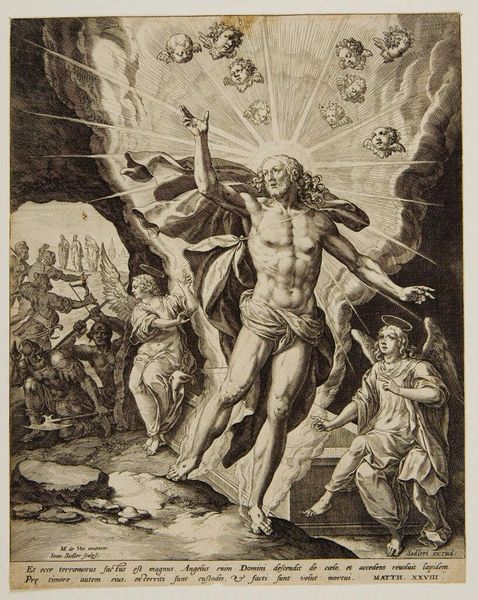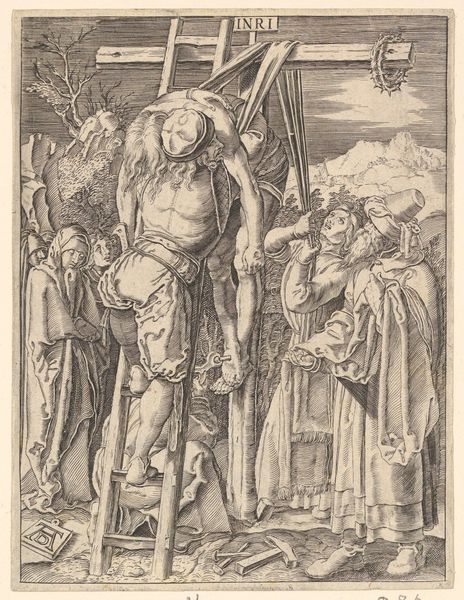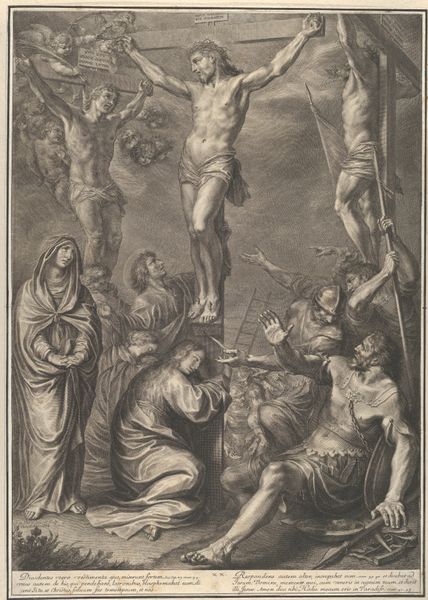
painting, sculpture
#
portrait
#
painting
#
sculpture
#
figuration
#
11_renaissance
#
soldier
#
sculpture
#
black and white
#
chiaroscuro
#
history-painting
#
decorative-art
#
italian-renaissance
#
statue
#
christ
Dimensions: 7 3/4 × 6 3/4 in. (19.7 × 17.1 cm)
Copyright: Public Domain
Curator: Standing before us is "The Resurrection," a painting attributed to Jean II Pénicaud, likely created sometime between 1550 and 1599. It’s part of the collection here at the Metropolitan Museum of Art. What strikes you about it at first glance? Editor: Its theatrical quality grabs me, actually. There’s a definite drama in the poses. The chiaroscuro, the strong contrast between light and dark, only heightens that. The soldiers in the foreground seem caught mid-act, scattered by this…presence. Curator: Absolutely. And let's consider that dramatic staging in the context of religious painting during the Renaissance. Artists like Pénicaud were creating works that served as powerful visual sermons. This wasn’t just art; it was a crucial tool for the Church. Editor: Right, and this resurrection narrative has always carried huge socio-political weight. Consider how it’s used to justify power structures, promises of redemption to control populations... Even now, centuries later. It raises questions of faith and liberation but within very specific ideological confines. Curator: Precisely. And the painting’s status as a decorative art object speaks volumes about its original function and intended audience. These pieces weren't meant to exist solely within the "art world." They were integral to everyday life, constantly reinforcing specific messages about faith and authority. Editor: That integration with "everyday life" makes the propagandistic possibilities so intense. If every visual encounter emphasizes specific power relations... how does that impact viewers’ perception of themselves in society? How do they navigate ideas of freedom when every devotional encounter centers power and dominance? Curator: A question that still rings true, doesn't it? Pénicaud's work invites us to reflect not only on its artistic merit, but also on the enduring legacy of images in shaping our understanding of history and ourselves. Editor: It's a stark reminder that even supposedly devotional images have the potential to enforce strict ideas around social dynamics, and gender, especially given its period and the general absence of women in this tableau. It is still very resonant for today’s audiences and the importance of art's capacity to spark ongoing critical conversation.
Comments
No comments
Be the first to comment and join the conversation on the ultimate creative platform.
